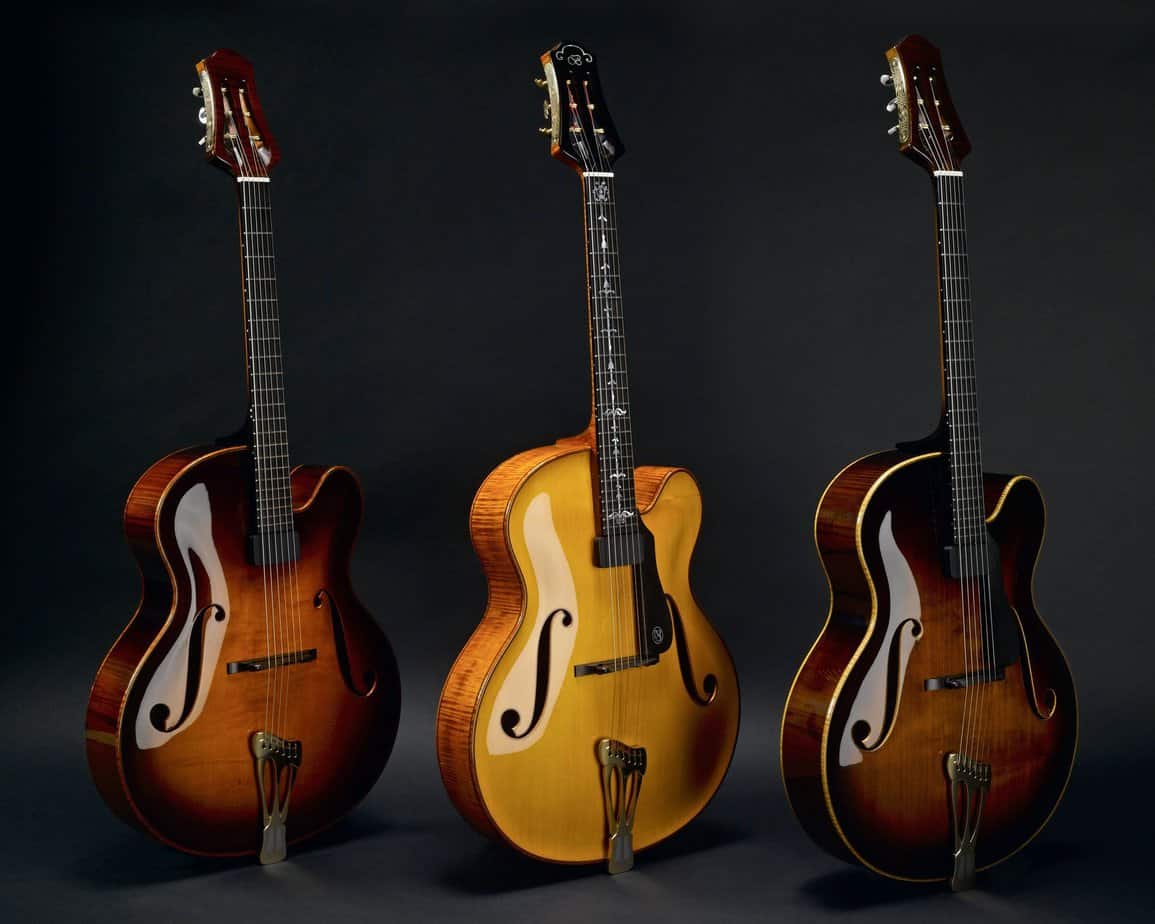Unknown Facts About Jazz Guitar Books
Wiki Article
Unknown Facts About Jazz Guitar Tabs
Table of ContentsExcitement About Jazz Guitar InstructionThe Facts About Jazz Guitar Instruction UncoveredOur Jazz Guitar Tab Books IdeasGetting The Jazz Guitar Tab To WorkJazz Guitar Instruction - An Overview
In enhancement, it keeps some of the warm, round tones that traditional jazz guitars are renowned for without sacrificing the sharper, much more concentrated audios of a solid-body guitar. A semi-hollow body guitar is much more functional contrasted to a traditional jazz guitar.The sounds are still extremely comparable, as well as jazz artists like Larry Carlton and John Scofield have generally preferred this guitar as their signature instrument (jazz guitar tab books). Gibson ES-335 1958 today The Gibson ES-335 is the guitar of tales and is a flexible model that functions very well for jazz in addition to various other styles of songs.
Because it soared onto the world stage in 1961, this guitar sets the appearances of an electric guitar with an entirely hollow body for a classic, vintage feel. With a light, well-articulated tone, the Online casino is a thinline archtop with an unique form and also an abundant history that goes back to the birth of a whole brand-new audio on the global stage.
Some Known Facts About Jazz Guitar Instruction.
Awesome tone and also playability Fantastic neck Terrific pickups Not as much resale value as a Gibson Solid Body Guitars A strong body guitar is made entirely of a solitary wood block. The strings of the instrument are extended over the guitar's body, as well as there are no additional holes to enable noise to resemble or enhance - jazz guitar tabs.Among the main advantages of utilizing a strong body guitar is the dimension. Solid body guitars are smaller than their hollow or semi-hollow counterparts, which can make a difference to artists who are stressed over performing with a tool that is also cumbersome or unrestrainable on stage. A strong body guitar has less to no comments problems.
You can utilize them in other genres such as rock or steel, which is less the situation with semi-hollow as well as definitely hollow body guitars. Solid body guitars may not have the most effective audio for jazz artists. While there are some remarkable exemptions to this regulation (Telecaster-type guitars), a lot of musicians tend to favor the typical cozy, round tones of hollow body guitars, as well as a solid body guitar simply can't duplicate that audio.
The 6-Second Trick For Jazz Guitar Tab Books
Joe Pass played a Fender Jazzmaster (as well as a Fender Jaguar) when was trying to eliminate a medication addiction in the Synanon Facility, possibly because that was the only guitar readily available at the facility. Because jazz guitar tab its initial release, the Jazzmaster has undertaken some moderate restorations, however throughout the board, the audio, design, and tone of this guitar is significantly the exact same as it was more than sixty years earlier (jazz guitar tabs).It has actually been in production continuously given that 1949.
Developed in the very early 1930s, the electric guitar came to be a need as jazz artists sought to magnify their sound to be listened to over loud big bands. When guitar players in huge bands just had guitars, all they could do was play chords; they can not play solos because the guitar is not a loud instrument.
The Facts About Jazz Guitar Instruction Revealed
The earliest guitars utilized in jazz were acoustic, later superseded by a normal electric arrangement of two humbucking pick-ups. In the 1990s, there was a rebirth of passion among jazz guitar players in acoustic archtop guitars with floating pickups. The initial acoustic archtop guitars were developed to enhance volume: because of that they were built for usage with relatively hefty guitar strings.

The denser chordal appearances, in contrast, approach chord soloing (see listed below). A third approach is to preserve a stable, hectic bass-line, like a New Orleans pianist. Here, no greater than 2 or three notes are played at a time, and also the complete consistency is suggested by arpeggiation. Exponents of this design frequently come from a country, folk or ragtime history, such as Chet Atkins, although it is additionally sometimes used by straight-ahead jazz professionals, for example Martin Taylor.
Report this wiki page